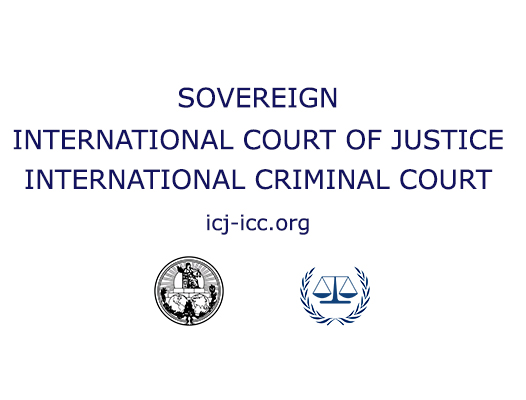ICJ/ICC Court Systems
Intracourts System
General Structure of: icjglobal, icj-icc, Icj-cij and ipcc-icc (“intracourts system”).
In general there are two sides to the ICJ and they complement each other in contrast, necessarily. (1) The ICJ Hague, which conducts In-House Court Trials and proceedings, while (2) the ICJ/ICC/IPCC Conglomerate, which focuses on core functions which includes Supreme Courts and High Courts arbitration and also handles various civil and financial criminal cases.
The various ICJ websites conduct litigation and juridical work, national dispute resolution and interbank settlements. Of these, the ICJ/ICC/IPCC conglomerate (here at icj-icc.org) is the site that concentrates on conducting legal and financial historical assets and bank funds Redemption.
Concurrently, The Hague is the Seat of Learning for the intracourts management services accorded by the local Netherlands Stately and Princely, caveat emptor, a temporary location from where to uphold and manage the global UPE Tribunals. But, it is nevertheless coming into reckoning by virtue of supporting the original Historical & Imperial Royal Families that both started and re-initiated the processes of reform and advisory to help shape and tide the vast number of court room cases and clearances requirements. Thus, the need to expand the infrastructures worldwide, as global banks must work on a daily basis, and the resultant core processing also generates plausible significant clearance work needed by the Arbitral Councils.
The function of the ICJ in The Hague is as follows:
- The International Court of Justice (French: Cour internationale de justice; commonly referred to as the World Court, ICJ or The Hague) is the primary judicial branch of the United Nations (UN). It is seated in the Peace Palace in The Hague, Netherlands, the court settles legal disputes submitted to it by states and provides advisory opinions on legal questions submitted to it by duly authorized international branches, agencies, and the UN General Assembly.
- Re-established in 1945 by the UN Charter, the Court began work in 1946 as the successor to the Permanent Court of International Justice (PCIJ). The Statute of the International Court of Justice (SICJ), similar to that of its predecessor, is the main constitutional document constituting and regulating the Court.
- The Court’s workload covers a wide range of judicial activity. After the court ruled that the United States’ covert war against Nicaragua was in violation of international law (Nicaragua -v- United States), the United States withdrew from compulsory jurisdiction in 1986 to accept the court’s jurisdiction only on a case-by-case basis. Chapter XIV of the United Nations Charter authorizes the UN Security Council to enforce Court rulings. However, such enforcement is subject to the veto power of the five permanent members of the Council, which the United States used in the Nicaragua case.
- The ICJ Representative Bureau in The Hague Netherlands is composed of fifteen judges elected to nine-year terms by the UN General Assembly and the UN Security Council from a list of people nominated by the national groups in the Permanent Court of Arbitration. The election process is set out in Articles 4–19 of the SICJ. Elections are staggered, with five judges elected every three years to ensure continuity within the court. Should a judge die in office, the practice has generally been to elect a judge in a special election to complete the term.
- Overall, the Court System (icjglobal, icj-icc, Icj-cij and ipcc-icc intracourts system) is a judicial, legal redemption and financial settlements “Redemption Court” of all financial systems intergalactic ISO4217 nomenclature currencies and ancestral assets. This is the core of the services under the original ICJ-PCIJ and IPCC-ICC singularity systems.

